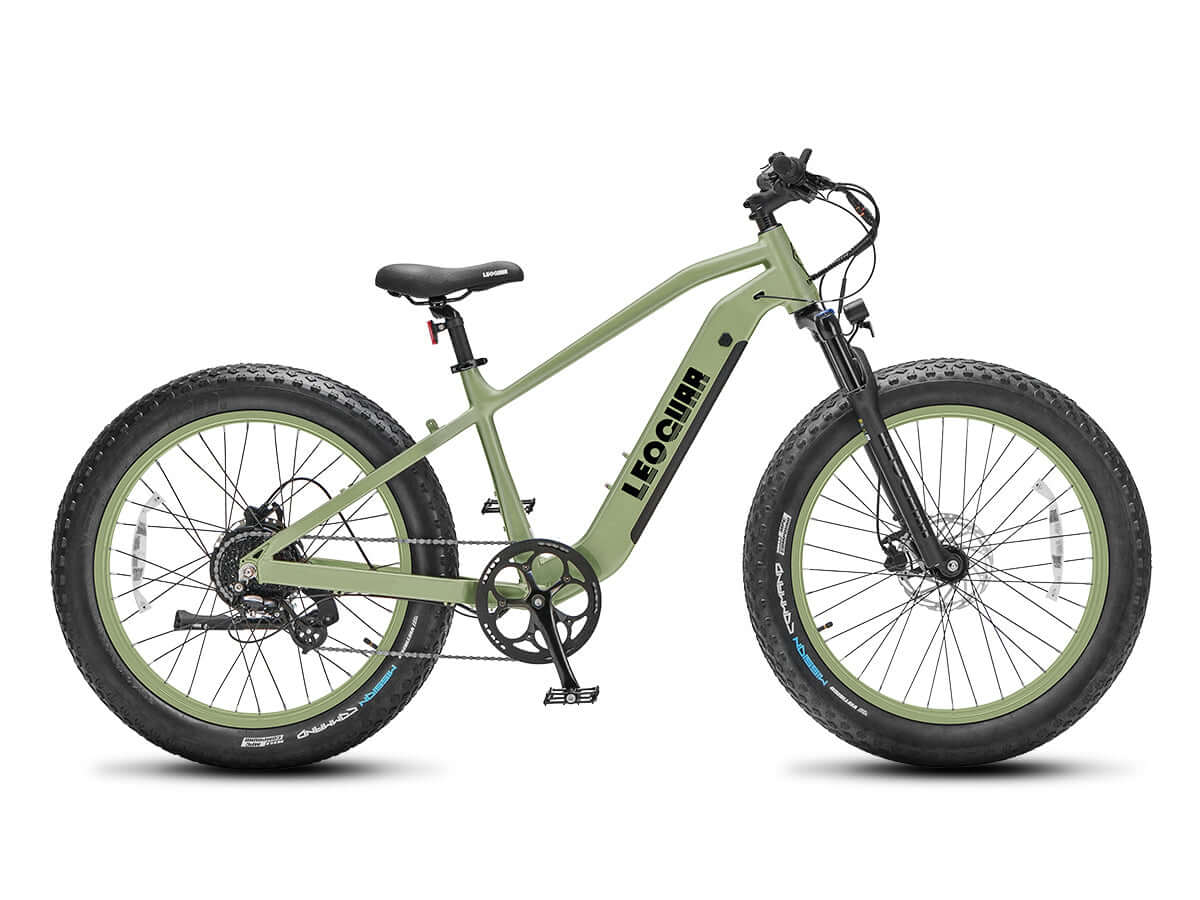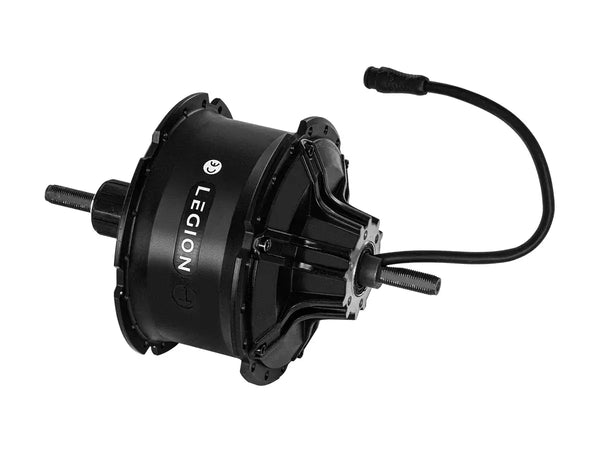
Fat Tire Motorized Bike Power: The Best Fat Tire Bike Motors for Every Terrain
Why Fat Tire Motorized Bikes Are Special
Fat tire motorized bikes give you a unique thrill. You can float over terrain that would stop a normal bike - soft sand, fresh snow, or muddy trails that seem impossible to cross. But shopping for one can get confusing fast. You'll see terms like "watts," "torque," and motor types like "hub" or "mid-drive" everywhere you look.
Choosing the right power system is the most important decision for your bike's performance. The best fat tire bike motor isn't about getting the highest numbers on a spec sheet though. It's about matching the right type of power to where you'll actually ride. Raw starting force works better in some places, while sustained speed matters more in others. This guide will help you understand the specs and choose the perfect motor for sand, snow, steep hills, or city streets.
Understanding Motor Power Numbers
Two numbers matter most when you're looking at motors: Watts (W) and Newton-meters (Nm) of torque. They measure completely different things, and both are crucial for heavy fat tire motorized bikes. Think of torque (Nm) as raw muscle that gets you moving. It's the twisting force that turns your wheel from a dead stop or pushes you up a steep hill when things get tough. Watts (W) work more like horsepower in a car. They help you maintain speed once you're already rolling along at a good pace.
For fat bikes with wide, chunky tires, having enough torque is especially important. These bikes are heavy and create lots of friction, so you need that initial grunt to overcome inertia and get rolling on soft surfaces. Here's how these specs break down:
| Specification | What It Means | Why It Matters for Fat Bikes |
|---|---|---|
| Torque (Nm) | The initial twisting force for acceleration and climbing | Essential for starting on sand/snow and conquering steep hills. Higher Nm means more "grunt." |
| Watts (W) | The rate of power delivery for top speed and overall output | Determines how fast you can go on flats and how easily you maintain speed |
Most motors range from 250W up to 750W or even 1000W in the US. Torque figures typically start around 50Nm and can reach 120Nm or more on high-performance models.
Hub Motors vs Mid-Drive Motors
The motor's location on your fat tire motorized bike changes everything about how it feels and performs. You'll choose between a hub motor or a mid-drive motor, and this decision is huge.
Hub motors sit in the center of your rear wheel (sometimes the front wheel). They apply power directly to the wheel, basically pushing or pulling the bike along without involving your pedals or gears. Mid-drive motors mount in the middle of the frame where your pedals connect. They send power through your chain and gears, just like when you pedal, so the motor can use your bike's gearing system. This difference completely changes your riding experience:
| Feature | Hub Motor | Mid-Drive Motor |
|---|---|---|
| Feel | A "pushing" sensation that feels separate from pedaling | Feels like you have superhuman legs with natural, intuitive power |
| Best For | Commuting, flatter terrain, cruising, budget-conscious buyers | Steep hills, technical trails, heavy loads, maximum efficiency |
| Pros | Lower cost, simpler design, less wear on chain and gears | Superior climbing ability, better weight balance, more efficient battery use |
| Cons | Less efficient on steep hills, complex tire changes, unbalanced weight | More expensive, puts more strain on drivetrain components |
The difference becomes obvious on challenging terrain. Hub motors struggle on steep hills because their power output is fixed - as the bike slows down, the motor gets bogged down outside its efficient range. Mid-drive motors can shift into lower gears, multiplying their torque to keep you climbing steadily. Community discussions often highlight how hub motors can disappoint riders who want to tackle serious hills or technical terrain.
Choosing Motors for Different Terrain
Now that you understand watts, torque, and motor types, let's match them to where you'll actually ride your fat tire motorized bike.
Sand and Snow Riding
Soft surfaces create massive rolling resistance that can stop you dead in your tracks. You need instant, controllable power to get moving and stay on top without digging in and getting stuck. A high-torque mid-drive motor (85Nm or higher) dominates here. It lets you select your bike's lowest gear, multiplying the motor's torque to provide incredible low-speed crawling power that you can control precisely.
Mid-drive motors feel like they bite into sand and pull you through smoothly. Hub motors, even powerful ones, tend to spin the wheel if you apply too much power too quickly. A powerful hub motor (750W with 80Nm+) can work on sand and snow. But mid-drive systems give you superior control when traction gets tricky.
Hills and Mountain Trails
Pointing a heavy fat tire bike uphill means fighting gravity with everything you've got. You need a motor that delivers sustained torque without overheating and provides power that feels natural for technical maneuvering.
Mid-drive motors are almost required for serious hills and mountain trails. Their ability to use your bike's full gear range is a complete game-changer that makes the difference between powering up climbs and struggling up them. Shifting to a lower gear keeps the motor in its optimal efficiency range. This makes steep ascents feel surprisingly easy while protecting the motor from strain and overheating.
Expert reviews consistently note that while many fat bikes get marketed for mountain use, only those with capable mid-drive systems truly deliver on steep, technical terrain.
City Streets and Commuting
Urban riding presents different challenges than off-road adventures. Quick acceleration from stoplights and efficient high-speed cruising become your main priorities.
A 750W geared hub motor hits the sweet spot for city riding. It balances power, performance, and cost perfectly while providing plenty of torque for zippy acceleration and easy cruising speeds. Mid-drive systems often feel like overkill for riders who stick mainly to pavement. The extra cost and maintenance requirements don't pay off when you're not tackling steep hills or technical terrain.
Understanding e-bike classifications helps here too. A 750W motor usually puts your bike in Class 2 (throttle-assisted up to 20 mph) or Class 3 (pedal-assisted up to 28 mph), giving you the speed and flexibility that urban environments demand.
All-Around Mixed Use
Maybe you want one bike that can handle weekday commutes and weekend trail adventures. This choice gets tougher and depends on what matters most to you. A powerful 750W+ geared hub motor offers fantastic balance for versatile riders. It handles moderate trails, dirt roads, and commuting needs with ease while keeping costs reasonable.
But if your mixed use includes regular steep hills, investing in a mid-drive motorized bike provides more capability and satisfaction across all terrains. The extra cost pays off when you need that climbing power.
Real-World Performance Comparison
Let's imagine two riders tackling a steep, muddy trail after a rainstorm to see how different motors perform. Rider one has a fat tire motorized bike with a powerful 750W rear hub motor. At the bottom of the hill, the bike surges forward with impressive initial push.
But as the incline steepens and mud gets thicker, the bike's speed drops. The hub motor works best at higher wheel speeds, so it begins to strain as things slow down. The rider pedals furiously in low gear to help the struggling motor. Even then, the rear wheel starts losing traction and spinning in mud without moving the bike forward, while the rear-heavy weight distribution makes control difficult.
Rider two approaches the same hill with a 750W mid-drive motor. Before starting the climb, they shift into low gear for maximum mechanical advantage. As they pedal onto the muddy section, the difference becomes obvious immediately. The motor applies power through the chain, multiplied by the low gear ratio. Instead of feeling "pushed," they experience powerful, steady amplification of their own pedaling. The cadence stays smooth, the wheel maintains firm grip, and the bike crawls upward with relentless traction while feeling balanced and planted. Both bikes had "750W" motors, but their power application in high-torque, low-speed situations was completely different.

Other Important Power Factors
Your motor is the heart of the system, but other components multiply or limit its effectiveness. Consider these factors when choosing your fat tire motorized ebike.
Battery specs matter more than you think. Voltage (V) acts like pressure behind the power - higher voltage systems (52V vs 48V) deliver power more efficiently, creating a "punchier," more responsive feel. Amp Hours (Ah) determine your range like a fuel tank size. The most powerful motor becomes useless without enough battery capacity to feed it during long rides.
Gearing makes or breaks performance. Wide gear ranges are absolutely essential for mid-drive motors to be effective, but they also help hub-drive bikes significantly. Good gearing lets you assist the motor more effectively on steep hills. It also makes it possible to pedal your heavy bike home if the battery dies unexpectedly.
Controllers act as the system's brain. You usually can't choose the controller separately, but quality ones indicate well-built bikes. Good controllers deliver power smoothly, prevent jerky starts, and include safety features. They protect motors and batteries from overheating or damage during demanding rides.
FAQ
1. Q: What's the minimum motor power I need for a fat tire motorized bike?
A: For basic riding on flat terrain, 500W works fine. For hills, sand, or snow, aim for 750W minimum. The torque rating (look for 60Nm+) often matters more than total watts for challenging terrain.
2. Q: Are mid-drive motors worth the extra cost over hub motors?
A: If you'll ride steep hills, technical trails, or challenging terrain regularly, yes. For mostly flat commuting and casual riding, a quality hub motor offers better value. Consider where you'll actually ride 80% of the time.
3. Q: How do I know if a fat tire bike motor will overheat on long climbs?
A: Look for motors with temperature sensors and thermal protection. Quality mid-drive systems from Bosch, Shimano, or Bafang handle sustained climbing better. Avoid cheap hub motors for serious hill climbing - they often overheat and shut down.
4. Q: Can I upgrade my fat tire bike motor later if I need more power?
A: Hub motor upgrades are sometimes possible but often cost-prohibitive. Mid-drive motor swaps are extremely difficult and expensive. It's better to buy the right motor power for your needs from the start rather than plan to upgrade later.
5. Q: What's the difference between 48V and 52V battery systems for fat tire bikes?
A: 52V systems provide about 8% more power and feel more responsive, especially under load. The difference is noticeable on hills and during acceleration. However, 48V systems are more common and often less expensive, with wider component compatibility.









































Leave a comment